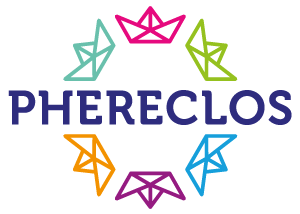Universidade Júnior - Junior University
- Portugal,National and some international participants
- 2005

| Time frame | |
| Categories | |
| Level of Schools | |
| External Partners | |
| Type of Schools | |
| URL | |
| Number of Schools involved | |
| Number of Schoolheads involved | |
| Number of Teachers involved | |
| Number of Students involved | |
| Number of Parents involved | |
| Number of External Partners involved |
The Junior University is the largest national program to introduce young people to the university environment and an example of articulation between higher education and basic and secondary education. Since its inception in 2005, more than 70 thousand children and teenagers between 10 and 18 years of age have participated in the program. The program presents a large diversity of activities in many different areas. Junior University strives to promote a zest for knowledge and to awaken potential in pre-university youngsters.
U.Jr. has been addressing multiple issues such as: vocational orientation, introduction to specific scientific areas or topics, the promotion of higher education and knowledge-based careers. U. Jr is providing as well a glimpse into everyday life in the 14 faculties that integrate the University. An important component of the U. Jr. is furthermore the promotion of pupils from underprivileged socioeconomic groups through a wide partnership with several Portuguese municipalities, associations and enterprises.
1) Foster basic and secondary education students’ interest for knowledge in its diverse areas: arts, science, technology, humanities.
2) Teaching the participants something new, but also providing support in the process of vocational choice.
3) Return to society a part of the investment that it has made in the university and contribute to mitigate the influence of one of the aspects that throughout history has been one of the main reasons for the country’s underdevelopment – the low Higher Education rates.
In 2005 the University wanted to face a new challenge on how to bring children and University together? The question was how to foster the interest for knowledge among youngsters?
The University thought about ways to encourage curiosity and to promote the knowledge, for instance in different scientific fields like natural sciences, technology, languages and arts, history and sports. In the Portuguese reality these approaches begin to emerge more clearly at school mainly from 10/11 years old (basic school).
The initiative reinforced the culture of cooperation and teamwork inside the University, because all the academic staff are invited by the Rector to propose ideas for each edition of the initiative.
The U.Jr program, and particularly the “Schools for Introduction to Research”, has also been seeking to attract the best students to U.Porto. Since 2006 the number of students that
had participated in U.Jr program and subsequently enrolled at U.Porto has been increasing.
Moreover, U.Porto is consistently attracting the students with the highest grades at national level. U. Porto is strongly convinced that there is a close link between these results and U.Jr.
The University of Porto governance recognize the importance of this project for the institution, that’s why is investing annually a small part of its budget.
The U.Jr program has two important moments in the year: In July, the general program (for students between the 5th and 12th years of schooling) and in September the schools of introduction to scientific research. The program between July and September it’s a very large program receiving more than 7000 youngsters.
The general program, counts on the contribution of 14 faculties, a business school, several research institutes and other educational parties. The general program is a weekly program divided in:
- “Summer Experiences” and “Summer Workshops” where each student participates in five different activities, each of them dedicated to a specific scientific area.
- “Thematic Workshops” two groups working on two areas of knowledge get together to share ideas and present their conclusions.
- “Summer in a Project” is constituted by activities dedicated to one topic.
- The “Language School” aims at developing or initiating the language skills of the students in a variety of languages.
The Junior University (Universidade Júnior - U.Jr) is a very large educational program, founded in 2005, conducted during the summer months, mainly aimed at 10-18 year olds, organized by the University of Porto.
The Junior University program has the purpose of dissemination of different areas of knowledge, offering summer courses designed by university professors, for the youngsters. The program offers non-formal activities that cover a wide range of areas, from basic sciences to technologies, from humanities to arts and sports, that allow students to acquire knowledge, which can help them in formal education contexts and everyday life activities. It also has the purpose to provide support in the process of vocational choice and return to society a part of the investment that was made and contribute to mitigate the low HE rates of the country, one of the aspects that throughout history has been one of the main reasons for the country’s underdevelopment.
The largest number of these participants originates from the country’s North region. However, they also comprise a significant number of children and teenagers from all over Portugal, both continental and from the Azores and Madeira islands. U.Jr has also become known in foreign countries and participants have come from countries such as the USA, Spain, France, China, Thailand, Mozambique, Angola, Cape Verde and São Tomé and Príncipe, in addition to children of foreign origin who live in Portugal.
Since Junior University is a project that is already taking place for the 15th time, it created opportunity to carry out social studies on the definition of new evaluation strategies and the project impacts. Many years of experience made possible to assess the impact that Junior University program has on 1st year student enrollment in the university that promotes the program. The sources used for these kind of studies are the U. Jr. database, which includes information on geographical provenience, type of school (private or state funded) and the information of the participants, which allowed for their follow-up.
The Junior University is the largest national program to introduce young people to the university environment and an example of articulation between higher education and basic and secondary education. Since its inception in 2005, more than 70 thousand children and and teenagers between 10 and 18 years of age have participated in the program. The program presents a very large diversity of activities in many different areas. Junior University strives to promote a zest for knowledge and to awaken potential in pre-university youngsters. Visitors can attend a number of activities designed for each age group and coordinated by U. Porto teachers, researchers and students.
Junior University is not based on any particular theoretical model, but rather a wide range of approaches:
- the active role of the student;
- the offer of creative and interactive activities for individuals and groups
- whenever possible the use of interdisciplinary approaches;
- the communication with adult audience, disseminating the activities of research centres and postgraduate training offers;
- the promotion of awareness of the common citizen of the University’s relevance for social, technological, cultural, economic and environmental development.
Furthermore, it wants to strengthen the collaboration between formal, non-formal and informal educational providers, enterprise, industry and civil society, as it ensures a relevant and meaningful engagement of all societal actors with science and increase uptake of science studies and science-based careers to improve employability and competitiveness.
It distinguishes itself from other projects, because of its scope in terms of target audience and the capacity to involve all the faculties, research institutes and many other stakeholders. Also all the activities conducted in many different areas are very diverse and interactive.
According to the plans developed for each activity, participants generally have very interactive and practical approaches, over the course of a week. For example, lab work, field work, workshops, etc.
The program has the annual collaboration of a set of actors with different capacities and competences:
The programs are designed and organized by University professors and implemented by under- and postgraduate students under the supervision of senior professors and researchers.
The planning, coordination and implementation of U.Jr are provided by three structures: Executive/Scientific Board, Coordination and activities’ Tutors.
Executive/Scientific Board: Constituted by U.Porto professors, its main responsibility is to assess on a scientific level and select the activities submitted at the ideas’ contest.
Coordination: It is responsible for the project’s implementation in its technical, logistical and financial levels. Tutors: A vast team of students and young researchers are responsible for presenting the proposals, preparing the programs and monitoring the activities under the supervision of senior professors and researchers.
Junior University has been establishing across the country many agreements with almost 50 municipalities, associations and enterprises. These strong connections have a major importance for the project because they grant the social inclusion of pupils from underrepresented groups in the summer courses.
Furthermore, it wants to strengthen the collaboration between formal, non-formal and informal educational providers, enterprise, industry and civil society, as it ensures a relevant and meaningful engagement of all societal actors with science and increase uptake of science studies and science-based careers to improve employability and competitiveness.
The Junior University programs cover a wide range of topics and areas of knowledge, which is why it is a transversal program. In its activities, usually they establish links between different areas showing the importance of combining of two or more academic disciplines.
Throughout the various editions many of the organized activities/workshops have some connection with the local reality, for example, current problems or strongest research areas linked to the industry.
One obvious group of (internal) stakeholders is the academic community, which includes students, faculty and staff. External stakeholders include various groups: businesses, families, alumni, governmental institutions, cultural institutions, research agencies, international financing bodies and the society at large.
Being open to society is fundamental to university life. The University of Porto is open to anyone who wants to discover and enjoy it. Pre-higher education learners, senior students, and an increasing number of tourists can all find a place at the University, in accordance with its Third Mission.
Agreements with municipalities, so as to allow the free participation of talented young people who are in an economically disadvantaged situation. Local governments disseminate the project among schools and offer transportation, registration fees or accommodation.
The University of Porto has been identifying and establishing many partnerships that are growing since the beginning of the Junior University, especially in what concerns the development of educational activities and relation with the youngsters. For instance, the House of Music, the Serralves Foundation, the Gaia Biological Park and the Ciência Viva Agency and many others jointed more recently such as Arouca Geopark, Museum FC Porto, CICCOPN, Transport and Communication Museum, Portuguese League Against Cancer, etc.
Junior University has been establishing many agreements across the country with almost 50 municipalities, associations and enterprises. These strong connections have a major importance for the project because they grant the social inclusion of pupils from underrepresented groups in the summer courses.
Internal: Academic community: Schools, Research units, Rectory and Social Services.
External: Educational partners: cultural, scientific, educational and business institutions of the city and region. Logistic partners: National Ministry of Defence (accommodation halls).
Local governments: Agreements with municipalities, so as to allow the free participation of talented young people who are in an economically disadvantaged situation. Local governments disseminate the project among schools and offer transportation, registration fees or accommodation.
Corporate partners: companies in the food, publishing, communication, and transportation sector.
Human Resources: Coordination and academic community – students, teaching and administrative staff. Around 250 professors and 500 tutors.
Quality management system: the scientific and academic board monitors the activities before, during and after their implementation. There is also external assessment processes (not every year) driven by a commission with four external members: two from Portuguese universities, one from a secondary education school and one representative from a company.
